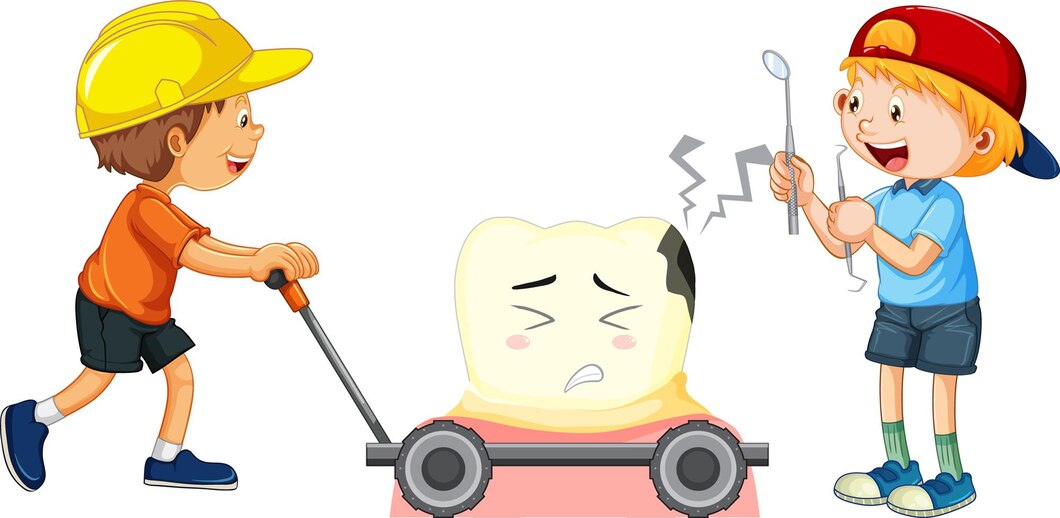Cracking the Case of a Broken Tooth and What to Do Next
Accidentally biting down on something hard can lead to a broken tooth, causing pain and concern. It’s important for dental patients to know how to respond and understand the implications for their oral health. This blog post provides essential information to help manage a broken tooth effectively.
Common Causes of Broken Teeth
Various factors can lead to a broken tooth, and recognizing these causes can help you take preventive measures. One common cause is biting down on hard foods, such as ice or candy, which can place excessive pressure on teeth. Additionally, accidents or falls can lead to sudden trauma, resulting in a break. Teeth weakened by decay or large fillings are also more susceptible to fractures.
In some cases, habitual teeth grinding, known as bruxism, can wear down the enamel and make teeth more vulnerable to breaking. Additionally, old dental work that has deteriorated over time can compromise the integrity of a tooth, making it prone to breakage. Understanding these causes can guide you in adjusting your habits and protecting your teeth.
Recognizing these causes not only helps in taking preventive steps but also emphasizes the importance of regular dental check-ups. Your dentist can identify potential weaknesses before they lead to a broken tooth and suggest ways to strengthen your teeth and improve overall oral health.
Types of Tooth Fractures and Their Implications
Not all broken teeth are the same; they can vary in severity and treatment needs. A common type is a minor crack, known as a craze line, which usually does not cause pain and may not require immediate treatment. However, a more serious fracture could reach the nerve, causing significant discomfort and requiring urgent attention.
Another type of fracture is a chipped tooth, where a small part of the tooth’s enamel breaks off, often without pain. While less serious, it can still affect your smile and may need cosmetic repair. Vertical root fractures, which start at the root and extend towards the chewing surface, are more complex and often require extraction due to their impact on the tooth’s structure.
Understanding the type of fracture is crucial in determining the appropriate response and treatment. Your dentist will evaluate the extent of the damage and recommend the best course of action to restore your tooth and maintain oral health.
Immediate Actions After Breaking a Tooth
After breaking a tooth, taking immediate steps can help manage pain and minimize further damage. The first step is to rinse your mouth gently with warm water to remove any debris and reduce the risk of infection. Using a cold compress on the outside of your mouth can help reduce swelling and numb the area.
If there’s bleeding, apply gentle pressure with a clean cloth or gauze to stop it. Over-the-counter pain relievers can help alleviate discomfort, but it’s important to avoid aspirin, as it can thin the blood and worsen bleeding. Refrain from eating hard foods, as they can worsen the fracture or cause more pain.
Preserving any broken pieces of the tooth, if possible, and contacting your dentist immediately is essential. They can provide guidance on the best next steps and determine whether emergency dental care is needed. Acting quickly not only alleviates discomfort but also improves the chances of successful treatment.
Seeking Professional Help for a Broken Tooth
While initial home care is important, seeking professional dental care is crucial for a comprehensive assessment and treatment plan. Emergency dental care ensures that the tooth is evaluated promptly, preventing further complications and preserving oral health.
During an emergency dental visit, the dentist will conduct a thorough examination, which may include X-rays, to assess the extent of the damage. They will discuss treatment options based on the fracture’s severity, aiming to restore the tooth’s function and appearance while ensuring long-term health.
Promptly seeking professional help can make a significant difference in the outcome. Emergency dentists like those in Colorado Springs possess the expertise and tools needed to address broken teeth effectively, offering solutions that range from simple fillings to more complex procedures like crowns or root canals.
What to Expect During Emergency Dental Treatment
Understanding what happens during emergency dental treatment can ease anxiety and help you prepare. Initially, the dentist will ask about the events leading to the break and any symptoms you’re experiencing. This information helps in diagnosing the fracture and developing an appropriate treatment plan.
Treatment options vary based on the fracture type and severity. For minor chips, a simple bonding procedure may suffice. More significant fractures might require a crown to restore the tooth’s shape and function. In severe cases, a root canal could be necessary if the pulp is exposed, followed by a crown to protect the tooth.
The dentist will discuss each option with you, including costs, potential outcomes, and the recovery process. Their goal is to provide the best care tailored to your needs while ensuring your comfort throughout the procedure.
Long-term Solutions and Recovery for Broken Teeth
After addressing the immediate concern, focusing on long-term solutions is vital for maintaining dental health. Restorative dental procedures, such as crowns or veneers, not only repair the damage but also strengthen and protect the tooth from future issues.
Proper recovery involves following your dentist’s post-treatment instructions, which may include avoiding certain foods and maintaining good oral hygiene practices. Regular dental check-ups are essential to monitor the tooth’s condition and address any emerging problems early on.
Preventing future fractures is also important. Using a mouthguard during sports, avoiding hard or sticky foods, and addressing habits like teeth grinding can reduce the risk of another break. Your dentist can provide personalized advice to minimize the chances of recurrence.
Tips for Preventing Future Tooth Fractures
While accidents are sometimes unavoidable, there are steps you can take to protect your teeth from future fractures. One effective method is using a mouthguard during activities that pose a risk of impact, such as sports or other physical activities.
Adopting a balanced diet rich in calcium and vitamin D supports strong teeth, while avoiding excessive consumption of sugary or acidic foods helps maintain enamel integrity. Regular dental check-ups allow your dentist to detect and address potential vulnerabilities before they lead to fractures.
Additionally, managing stress and avoiding habits like chewing on ice or hard objects can significantly reduce the risk of tooth fractures. By being proactive about your oral health, you can enjoy a strong, healthy smile for years to come.
Conclusion
Now that you understand the importance of seeking prompt dental care after breaking a tooth and how to prevent future fractures, you can take control of your oral health. Remember to always act quickly, seek professional help, and follow your dentist’s recommendations for long-term solutions and prevention.
Keep an eye for more news & updates on NewsLetTertribune!






